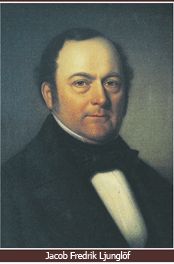American Moist Snuff versus Swedish Snus
The Difference between Copenhagen Dip and Real Swedish Snus
There exists the misconception within the United States that American Moist Snuff/Dip is little different than Swedish Snus except you don’t have to spit with Swedish snus. I decided to delve into the history of dip and snus to find the true differences.
I’m working through an excellent history of snus right now written by Janne Sundling. It is in Swedish, and I am constantly pulling out my Svenskt/American dictionary or calling my Swedish neighbor all hours of the day to clarify certain passages, but there’s a lot in there about the differences between American snuff and Swedish snus.
Starting back around the late 1600’s, Swedish snus has traditionally always been air-cured. Most tobacco was imported from the US and allowed to cure in transit on the ship. This was prior to the development of American flue-cured tobacco, so by the time Sweden got around to being able to grow their own tobacco they only knew of processing it “the old way” which was to hang it in the barn and let it air dry. This kept the TSNA count to a minimum as we all know now, while the Americans went flue-burn crazy adding all kinds of unsafe chemicals to their tobacco.
 This was back when everyone still used snus nasally. It wasn’t until the late 1700’s when the habit of taking it orally became popular. Snus makers started adding more moisture to their snuff and went to great pains to seal the shipping containers as best they could to prevent drying. (Some people still used it nasally, including JF Ljungolf, the creator of Ettan.)
This was back when everyone still used snus nasally. It wasn’t until the late 1700’s when the habit of taking it orally became popular. Snus makers started adding more moisture to their snuff and went to great pains to seal the shipping containers as best they could to prevent drying. (Some people still used it nasally, including JF Ljungolf, the creator of Ettan.)
Back around 1830, Ljungolf and his snus-loving buddy JJ Berzilius (father of modern chemistry, and all-around genius renaissance man) hit upon the unique pasteurization method, which made the snus that much safer. Berzilius was the first person in fact to suggest that there was potentially dangerous macrobiotic organisms in tobacco and they could be kept to a minimum if steam processed like milk. It took 250 years to prove him right.
much safer. Berzilius was the first person in fact to suggest that there was potentially dangerous macrobiotic organisms in tobacco and they could be kept to a minimum if steam processed like milk. It took 250 years to prove him right.
Meanwhile, back in the US, some Danish immigrants working for the Weyman snuff company caught the owner’s attention with the way that they took their snuff (orally, instead of nasally) and together they created Copenhagen moist snuff, which was based on an old Swedish snus recipe. The difference was that while great improvements were being made to moist snuff in Scandinavia, American snuff was still being made of the traditional fermentation process and with the native flue-cured tobacco. It would remain that way for another 175 years, killing a million or more people in the process.
So based on that, you will never hear me equate the two tobacco products. The fact that dip is still fermented means that the smokeless companies in the US don’t want to switch to the more expensive pasteurization process. They’re two hundred years behind the Swedes. I’m also convinced that there is more danger to certain tobaccos than just TSNAs. There’s also the syrup and sugar that helps you rot your teeth as well as the jagged cuts that just plain make your gums feel worn out. (And no, I’m not talking about fiberglass- that’s an old wives tale that should have died out fifty years ago.) Snus is nowhere in that league.
Copenhagen and Ettan were both introduced in 1822. And comparisons between Copenhagen and Ettan are exactly what they were two centuries ago. You have a cheaply made, fermented, possibly fire-cured American product that will probably rot your mouth and worse thanks to its sugar and double digit TSNA count- then you have a premium-made, Swedish import that utilizes the most modern production techniques and has never been known to cause health problems.
When was the last time US Smokeless Tobacco paid for someones jaw to be removed or offer to pay for their teeth to be pulled? Yet Swedish Match gets word that someone caught cavities from one of their products and without legal intimidation, they automatically offer to pay his dental bills and immediately change their recipe to use artificial flavorings. Swedish Match (and the other real snus makers) actually stand behind what they make while the US Smokeless companies stand behind only their profits.
That misconception that snus, snuff, dip and chew is all the same is something that the snus makers are going to have to fight tooth and nail in order to make a foothold in this country. We know dip is bad. Heck, ask the average smoker and they’ll tell you that smokeless is worse than smoking. Snus should never be identified with dip. It’s so much better than that.
R.R. HUBBARD
The World According to Feck
Reporting for SnusCENTRAL.org
![]()
About author
You might also like
Tobacco, the American Revolutions of 1776…..and Today?
The “Age of Enlightenment” was a time in world history that was characterized by massive revolutions in thought, government, religion, arts, science, economics, and humanity. Beginning roughly with the publications
Obama Hears a Help
Obama Hears a “Help!” A satirical poem by R.R. Hubbard (With apologies to Dr. Seuss) On the fifteenth of May, in the County of Cook,Swimming in the green pool of
The PACT Act and the Weinergate Legacy
It’s just under 100 days since Anthony Weiner accidentally posted a photo of his penis to his public Twitter account. In the ensuing scandal of lies, attempted cover-ups and general

